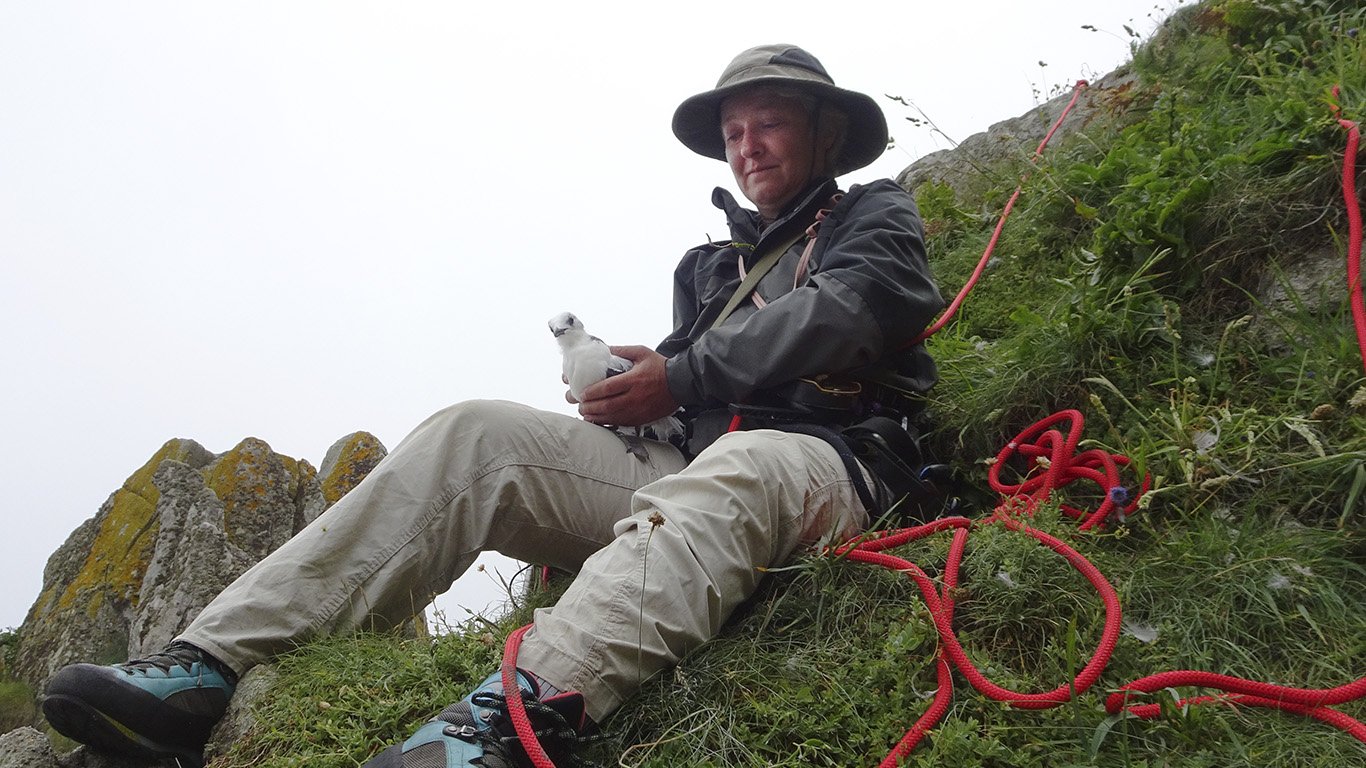
Biographie
Research
At the heart of my research is a fondness for studying the quantitative processes underlying population dynamics, i.e. demographic processes. My initial training was in analyses of population processes of vertebrate species such as seabirds based on Capture-Mark-Recapture models. Whoever has read a book on evolutionary ecology knows that demography is at the heart of the theory of life history evolution: the evolution of the timing of key events in the trajectory of individuals throughout life: growth, reproduction, and death. In the past 20 years I have been continuously involved in a long-term project focusing on the demography of a seabird population. (https://www-iuem.univ-brest.fr/observatoire/observation-cotiere/faune-flore/mouettes). I am a data producer and I analyze these data with the help of collaborators (quantitative wildlife biologists, statisticians). One of the challenges of BeBEST2 is to better understand the dynamics of marine benthic species whose populations are subjected to extreme daily variations in environmental conditions (e.g., Archipel de Saint Pierre et Miquelon); some of these species exhibit an exceptional longevity (Arctica islandica, https://genomics.senescence.info/species/index.html). BeBEST2 is a unique place to work with ecologists on the design of sampling protocols and on the analysis of (sometimes existing) data to address questions about population processes and population viability using unified demographic approaches that have seldom been used in bivalve demography. Structured matrix population models have been used in species like Arctica islandica, but little is known about the possible perturbations to population structure created either by inter-annual environmental variation or a meta-population functioning. Making progress in this area should help to become better at forecasting the impacts of environmental change on population community dynamics. In addition, the extreme longevity observed in this species triggers curiosity and encourages us to investigate the dynamics of recruitment and the respective roles of recruitment and mortality in the dynamics of the population.
More generally, quantitative wildlife biologists have developed approaches to address the dynamics of populations or communities that are being increasingly used in the marine environment. I am interested in using such approaches to analyze data from benthic observation series and work with experts in benthos monitoring to identify specificities of such series and modify existing models to accommodate such specificities.
Research interests
- Population dynamics modelling,
- Phenological responses to climate change and their influence on population demography and fitness,
- Life history evolution: the schedule of investment into growth and reproduction during life in relation to longevity in long-lived species,
- Habitat selection decisions and dispersal in colonial seabirds,
- Bird migration strategies and environmental change.
Teaching
Graduate level
Quantitative wildlife ecology, applied population ecology (population dynamics, conservation biology, evolutionary ecology), biostatistics and modeling in ecology, capture-mark-recapture and occupancy modeling.
Undergraduate level
Ecology, population biology, research project
2018 – Present. Professor, Université de Bretagne Occidentale, France
2006 – 2018. Professor, Université Toulouse III, France
2010 – 2012. Research sabbatical, Biostatistics and population biology group, Centre National de la Recherche Scientifique, Centre d’Écologie Fonctionnelle et Évolutive, Montpellier, France.
2005 - Habilitation à Diriger des Recherches. Université Toulouse III, France.
2002 - 2006. Assistant Professor, Université Toulouse III, France.
2002 - Post-doctoral fellow. Institut Mediterrani d´Estudis Avançats IMEDEA (CSIC-UIB) Esporles, Mallorca, Spain. Use of mathematical and statistical models for addressing the demography of seabirds of conservation concern: a population and metapopulation approach.Team leader: D. Oro.
2000 – 2001. Post-doctoral fellow. Simon Fraser University, Department of Biological Sciences. Burnaby, BC, Canada. Demographic analysis of a Marbled murrelet (Brachyramphus marmoratus) population in British Columbia (Canada). Team leader: F. Cooke.
1998 – 2000. Post-doctoral fellow. Biometry group, Patuxent Wildlife Research Center, Laurel, MD, U.S.A.; North Carolina State University, Department of Forestry, NC, U.S.A. Analysis of relationships between forest bird community dynamics and landscape attributes; use of capture-recapture approaches to estimate community-level parameters (species richness, extinction and colonization probabilities, turnover). Team leaders: J.D. Nichols and J.R. Sauer.
Education / Training
1994 – 1997. Ph.D. Université Paris VI, Pierre et Marie Curie, Paris, France.
1993 - Diplôme d'Études Approfondies, Paris VI / Université Paris Sud/ Institut National d'Agronomie Paris-Grignon, France.
1993 - Maîtrise d'Océanographie Biologique, Université de Bretagne Occidentale, France.